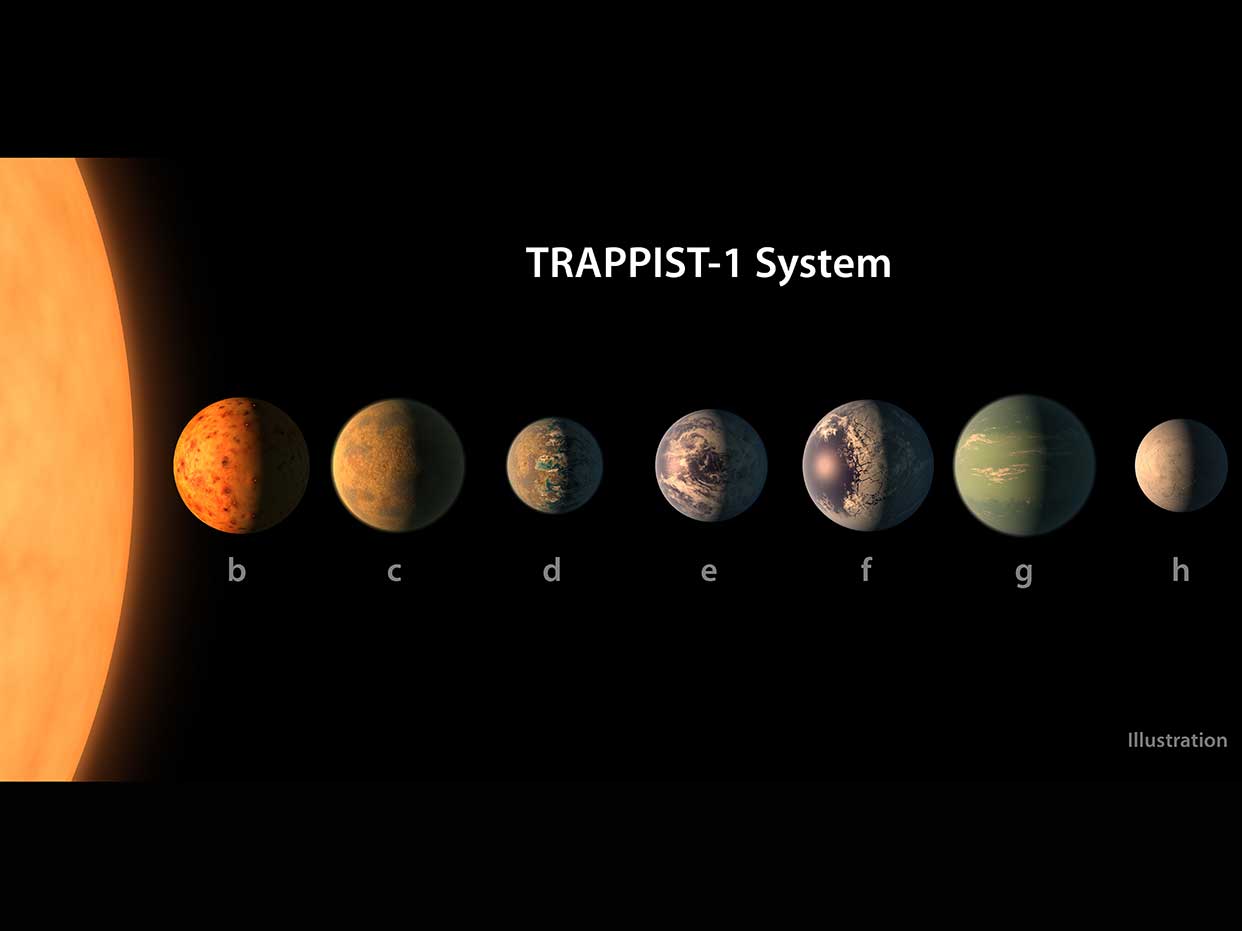Nasa discovers solar system that may support alien life
Seven Earth-like planets found orbiting 'ultracool dwarf star' star known as Trappist-1

Nasa has found seven Earth-sized planets in close orbit around a dwarf star 39 light years from us, with at least three of them lying within the so-called "habitable zone", which means they might be capable of sustaining water and possibly life.
"No other star system has ever been found to contain so many Earth-sized and rocky planets, of the kind thought to be necessary to contain aliens," The Independent says.
Lead researcher Michael Gillon, from the University of Liege in Belgium, said the planets "are all close to each other and very close to the star, which is very reminiscent of the moons around Jupiter.
The Week
Escape your echo chamber. Get the facts behind the news, plus analysis from multiple perspectives.

Sign up for The Week's Free Newsletters
From our morning news briefing to a weekly Good News Newsletter, get the best of The Week delivered directly to your inbox.
From our morning news briefing to a weekly Good News Newsletter, get the best of The Week delivered directly to your inbox.
[[{"type":"media","view_mode":"content_original","fid":"108570","attributes":{"class":"media-image"}}]]
"They could have some liquid water - and maybe life, by extension - on the surface," he added.
The planets were discovered orbiting a star known as Trappist-1, "an ultracool dwarf star, much smaller and roughly 200 times fainter than the sun", reports the Los Angeles Times, and were "detected using Nasa's Spitzer Space Telescope and several ground-based observatories", says the BBC.
It adds that the next phase of research "has already started to hunt for key gases like oxygen and methane which could provide evidence about whatever is happening on the surface".
A free daily email with the biggest news stories of the day – and the best features from TheWeek.com
-
 Trump vs. states: Who gets to regulate AI?
Trump vs. states: Who gets to regulate AI?Feature Trump launched a task force to challenge state laws on artificial intelligence, but regulation of the technology is under unclear jurisdiction
-
 Decking the halls
Decking the hallsFeature Americans’ love of holiday decorations has turned Christmas from a humble affair to a sparkly spectacle.
-
 Whiskey tariffs cause major problems for American distillers
Whiskey tariffs cause major problems for American distillersIn the Spotlight Jim Beam is the latest brand to feel the pain
-
 How Bulgaria’s government fell amid mass protests
How Bulgaria’s government fell amid mass protestsThe Explainer The country’s prime minister resigned as part of the fallout
-
 Femicide: Italy’s newest crime
Femicide: Italy’s newest crimeThe Explainer Landmark law to criminalise murder of a woman as an ‘act of hatred’ or ‘subjugation’ but critics say Italy is still deeply patriarchal
-
 Brazil’s Bolsonaro behind bars after appeals run out
Brazil’s Bolsonaro behind bars after appeals run outSpeed Read He will serve 27 years in prison
-
 Americans traveling abroad face renewed criticism in the Trump era
Americans traveling abroad face renewed criticism in the Trump eraThe Explainer Some of Trump’s behavior has Americans being questioned
-
 Nigeria confused by Trump invasion threat
Nigeria confused by Trump invasion threatSpeed Read Trump has claimed the country is persecuting Christians
-
 Sanae Takaichi: Japan’s Iron Lady set to be the country’s first woman prime minister
Sanae Takaichi: Japan’s Iron Lady set to be the country’s first woman prime ministerIn the Spotlight Takaichi is a member of Japan’s conservative, nationalist Liberal Democratic Party
-
 Russia is ‘helping China’ prepare for an invasion of Taiwan
Russia is ‘helping China’ prepare for an invasion of TaiwanIn the Spotlight Russia is reportedly allowing China access to military training
-
 Interpol arrests hundreds in Africa-wide sextortion crackdown
Interpol arrests hundreds in Africa-wide sextortion crackdownIN THE SPOTLIGHT A series of stings disrupts major cybercrime operations as law enforcement estimates millions in losses from schemes designed to prey on lonely users